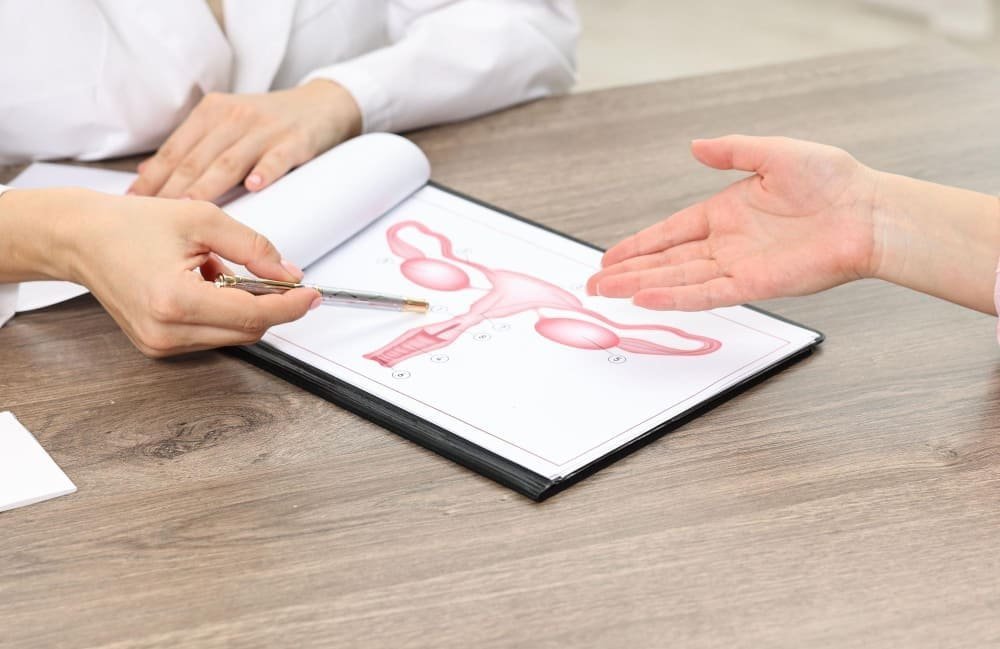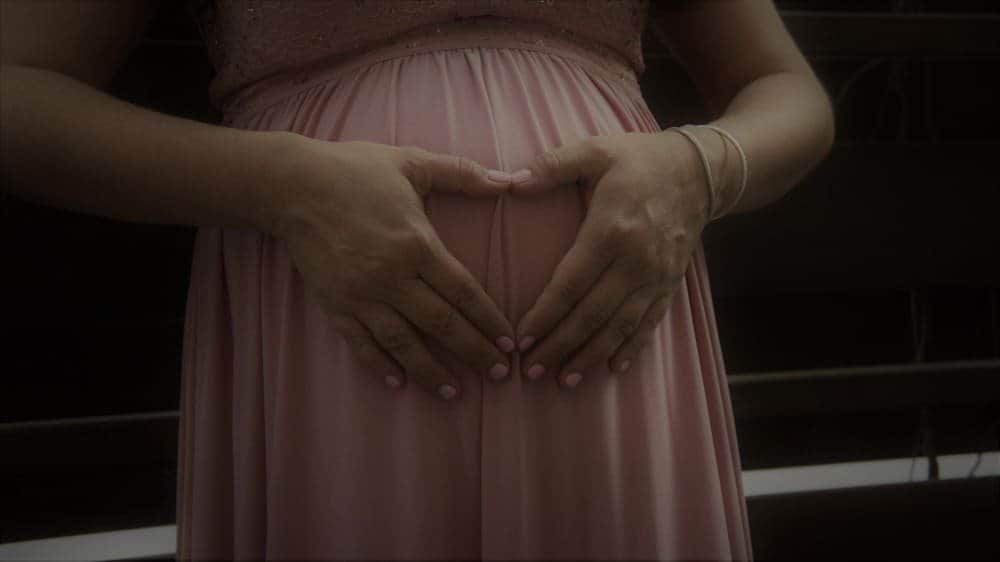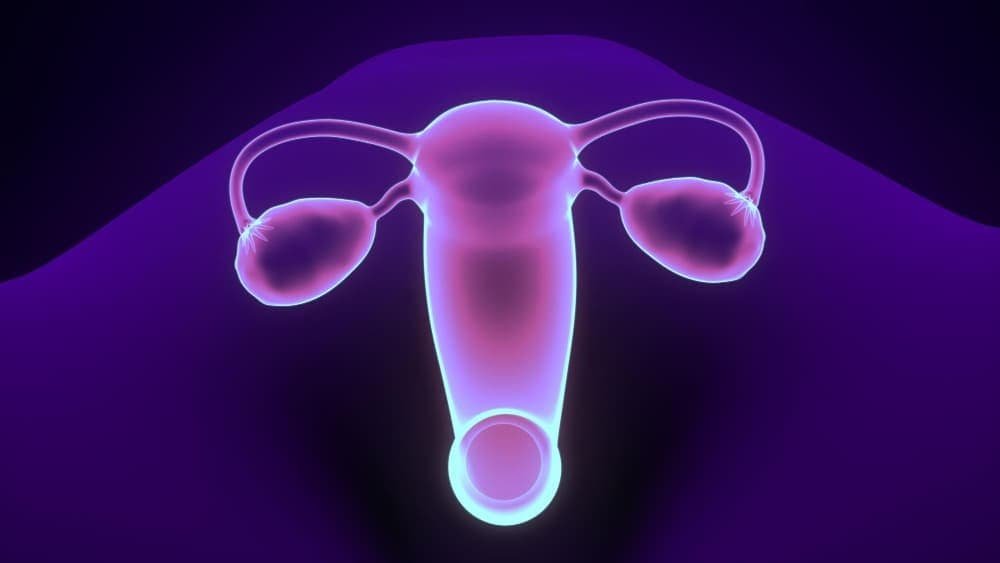Are you battling pelvic pain that never truly goes away? For many women, this isn’t just a tough period—it’s adenomyosis pain all the time. This chronic discomfort is real and debilitating, but you don’t have to live with it. Let’s explore why it hurts and how you can find lasting relief.

What is Adenomyosis? The Uterus’s Misunderstood Condition
Adenomyosis is a condition where the tissue that normally lines the uterus (the endometrium) begins to grow into the muscular wall of the uterus. When this endometrial tissue grows where it doesn’t belong, it continues to act as it normally would — thickening, breaking down, and bleeding during each menstrual cycle.
Because this activity occurs inside the uterine muscle, the blood and tissue have nowhere to go. This process is what leads to an enlarged uterus, inflammation, and severe pain.
The “Sister Disease of Endometriosis”
You may have heard adenomyosis called the “sister disease of endometriosis.” While they are similar conditions and can cause similar symptoms, they are different.
- Endometriosis: The endometrial-like tissue grows outside the uterus, affecting organs like the ovaries, fallopian tubes, and pelvic lining.
- Adenomyosis: The endometrial tissue grows into the uterine muscle wall itself.
It’s possible for women to have both conditions at the same time, which can make getting an accurate diagnosis crucial for finding effective relief.
Why the Constant Pain? Understanding Adenomyosis Symptoms
The most defining symptom of adenomyosis is pain. But why does it feel like the adenomyosis pain is there all the time, not just during your period?
The growth of tissue within the uterine wall leads to a bulky, tender uterus that is chronically inflamed. This constant state of inflammation is a key reason for the persistent discomfort. The types of pain women report often include:
- Severe Menstrual Cramping: Many describe the cramping as debilitating, sharp, and knife-like, getting progressively worse over the years.
- Chronic Pelvic Pain: A constant, dull ache in the abdomen or pelvic region that persists throughout the month. This chronic pain is a hallmark that the issue is more than just difficult periods.
- Painful Sex (Dyspareunia): Deep pain during or after intercourse is very common, causing significant emotional and physical discomfort.
- Chronic Back Pain: The enlarged uterus can put pressure on surrounding structures, causing a persistent, nagging ache in the lower back.
More Than Just Pain: Other Signs of Adenomyosis
While severe pain is a major indicator, it’s not the only symptom. Adenomyosis often brings other challenging signs that can significantly affect a woman’s quality of life. Recognizing them is the first step toward finding help.
Heavy or Long-Lasting Periods 🩸
One of the most common signs is abnormally heavy menstrual bleeding (menorrhagia). This isn’t just a slightly heavier flow; it can mean soaking through pads or tampons every hour. Along with heavy bleeding, many women experience long-lasting periods, with bleeding that continues for more than a week.
Bloating and Pressure
Do you often feel a sense of pressure or bloating in your lower tummy? This is another direct result of the enlarged uterine wall. This feeling of fullness and pressure contributes to the overall pelvic discomfort and can make you feel like your abdomen is swollen.
Chronic Fatigue and Sleep Disruption
Dealing with chronic pain and heavy bleeding is exhausting. The constant need to manage symptoms, coupled with the potential for anemia (low iron) from excessive bleeding, often leads to profound fatigue. When your body constantly hurts, it can be difficult to get restorative sleep, creating a frustrating cycle of exhaustion. 😟
Getting Answers: How Is Adenomyosis Diagnosed?
Adenomyosis has historically been a misunderstood disease, often overlooked or misdiagnosed as other conditions like fibroids. For years, the only definitive way to diagnose it was through a pathology exam after a hysterectomy.
Thankfully, that has changed. If you are experiencing these symptoms, the first step is to talk to a doctor or gynecologist. A thorough Adenomyosis Diagnosed process today typically involves:
- Pelvic Exam: Your doctor may notice that your uterus feels enlarged or tender.
- Transvaginal Ultrasound: This imaging technique uses sound waves to create pictures of your pelvic organs. A skilled sonographer can often identify signs of adenomyosis, such as a thickened uterine wall.
- MRI (Magnetic Resonance Imaging): An MRI is highly effective at visualizing the soft tissue of the uterus and can clearly show the endometrial tissue growing into the muscle. This often provides the most conclusive non-invasive adenomyosis report.
Finding Relief: Your Treatment and Management Options

Once you have a diagnosis, you can finally explore a path toward relief. The right treatment depends on the severity of your symptoms, your age, and your desire for future fertility.
Medication and Pain Management
For milder symptoms, your doctor might first suggest medication to manage the pain and heavy bleeding. This can include anti-inflammatory drugs or hormonal treatments like birth control pills to help regulate your menstrual cycle. However, for many, this only provides temporary or partial relief from the debilitating pain.
Traditional Surgery
For a long time, the main surgical option offered was a hysterectomy, the complete removal of the uterus. While this is a definitive cure for adenomyosis, it is a major surgery and ends a woman’s fertility. For many, this feels like an extreme and undesirable option.
A Modern, Uterus-Sparing Option: Interventional Radiology 💪
Today, there is an advanced and minimally invasive alternative that can provide significant relief without major surgery: Uterine Artery Embolization (UAE).
As an interventional radiologist, Dr. Samir Abdel Ghaffar specializes in this exact procedure. UAE works by blocking the blood supply that “feeds” the adenomyosis tissue. A tiny catheter is guided through a blood vessel in your wrist or groin to the uterine arteries. Microscopic particles are then injected to block the blood flow to the affected tissue, causing it to shrink and die.
The benefits are significant:
- It preserves the uterus.
- It is minimally invasive, requiring only a tiny incision.
- Recovery time is much faster than with a hysterectomy.
- It is highly effective at reducing both painful, heavy bleeding and chronic pelvic pain.
This procedure has transformed women’s health, offering a powerful solution that empowers people to reclaim their lives from adenomyosis without resorting to major surgery.
You Are Not Alone: Living with Adenomyosis
Living with a chronic, painful condition like adenomyosis can feel isolating. The constant discomfort, fatigue, and impact on your daily life, work, and relationships are real. Raising awareness about this condition is crucial so that more women can get the diagnosis and help they need sooner. ❤️
If your symptoms are affecting your life, know that you are not just “experiencing bad cramps.” Your pain is valid, and you deserve effective solutions. The first step is speaking up. ✅
Don’t let adenomyosis pain control your life any longer. If you are tired of the constant battle with your body and want to learn about lasting solutions like Uterine Artery Embolization, it’s time to consult with a specialist. Dr. Samir Abdel Ghaffar is dedicated to helping women find relief from adenomyosis and other uterine conditions. Take the first step toward a life with less pain. 🤔

 العربية
العربية 


